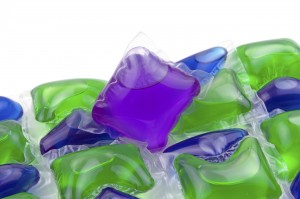Shopping is a necessary part of the holiday season, and staying safe while shopping is key to its enjoyment.
We are always reminded of the do’s and don’ts of shopping safety: park in a well-lit area, don’t walk to your car alone, have keys ready, know your surroundings, don’t let electronics distract you, carry only small amounts of cash, and avoid holding too many bags or carrying a large purse, but there are other shopping hazards lurking about that we don’t think of. Among them are:
Obstructions: Overcrowded merchandise in the aisles can lead to trips or falls.
Overhead boxes: Warehouses store large, heavy boxes on high shelves. These boxes have been known to fall, causing fatalities. Unfortunately, stores don’t warn you to look out for falling items. Instead, it is up to you to always be aware of precariously perched boxes overhead.
Forklift Operators: Stay clear of any areas where a forklift is operating, as well as the aisles on either side of a moving forklift. Operators have been known to topple boxes from the opposite side of a shelf, causing boxes to fall and crush unsuspecting shoppers.
Furniture: Unsecured bookcases, T.V. consoles, lumber and other heavy items can fall on children or shoppers. Many stores secure these items with bungee cords or restraining bars, but the restraining devices have been known to break as well; so always use caution and don’t let children stand where the item might fall.
Slips/Falls: Thousands of shoppers every year suffer serious injury due to slip and falls. Be aware of slippery floors, uneven pavement, bad lighting, and loose or icy carpet, all of which can cause injury from an unwanted fall.
Shopping Carts: Be sure they’re not top heavy, which can cause them to tip over on a child walking beside them. Be aware of any overzealous shoppers or employees who might run into you while not paying attention. And as always, if you put a child in a cart make sure they’re strapped in to prevent them from falling out.
Reaching Overhead for Merchandise: Always have employees get heavy items off the top shelves. They have special equipment that allows them to reach the items safely. Shoppers have sustained brain and spinal injuries from falling merchandise when trying to reach it above their heads.
Retail stores have a duty to maintain a safe shopping environment for their customers; however, should you find yourself injured while shopping this season take steps to ensure that your injuries are taken care of quickly:
- If necessary, call 911
- Talk to witnesses/employees who saw the accident. Make sure to get their name & number
- Get the manager. Have him/her complete an incident report and find out who the store’s insurer is. If possible, get a copy of the report.
- Take pictures of the area, being sure to get a copy of whatever caused the accident (i.e., water on the floor, a fallen object, etc.)
- Go see your doctor
As always, know your surroundings and stay safe while shopping this holiday season. Let an employee know if you see liquid in the aisle, a heavy item that’s about to fall, or any other safety issue. The company will appreciate the heads-up, and you will likely have prevented what could have been a serious injury to an unsuspecting customer.
 Children are attracted to anything colorful, especially if it looks like candy. And those colorful detergent pods we use to clean laundry and dishes can look very appetizing. In fact, they look just like candy or juice; they’re individually wrapped, are brightly colored, and come packaged in what looks like a candy jar. It’s no wonder that children want to taste them.
Children are attracted to anything colorful, especially if it looks like candy. And those colorful detergent pods we use to clean laundry and dishes can look very appetizing. In fact, they look just like candy or juice; they’re individually wrapped, are brightly colored, and come packaged in what looks like a candy jar. It’s no wonder that children want to taste them.